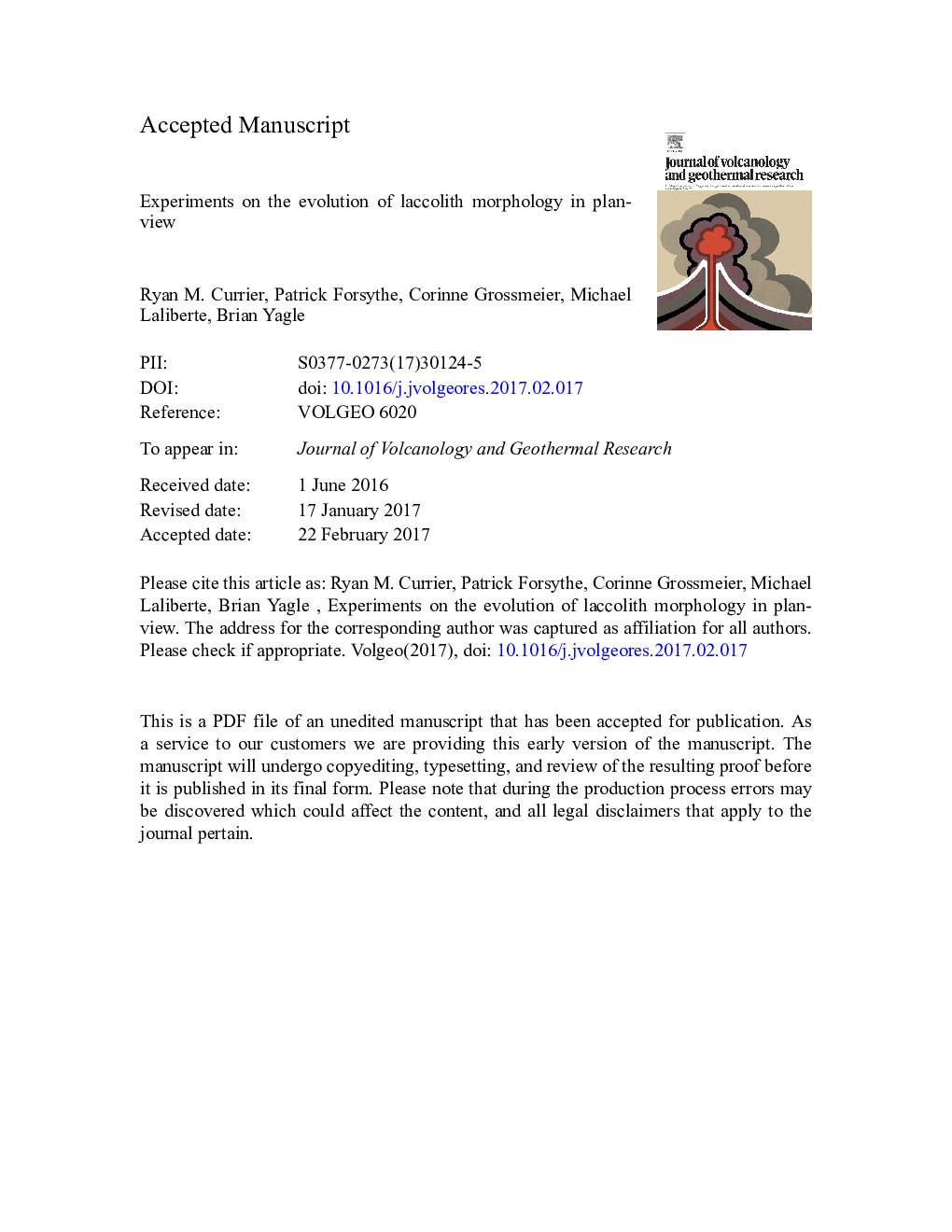| Article ID | Journal | Published Year | Pages | File Type |
|---|---|---|---|---|
| 5783863 | Journal of Volcanology and Geothermal Research | 2017 | 70 Pages |
Abstract
The ultimate shape of a laccolith is the result of competition between internal magmatic phenomena (e.g. overpressure and the process of solidification), and the state of the external host rock (e.g. thickness of the overburden, the presence of faults, and regional tectonic stresses). Intrusion morphology can be utilized as an inferential tool to better understand emplacement dynamics and history. One specific shape aspect rarely considered is the intrusion's ellipticity, which is the ratio of its long to short axes in plan view. Here, with a series of simple analog experiments that integrate the effects of flow along pre-existing fractures and solidification during emplacement, an assessment is performed of the existing models for formation of a laccolith's plan morphology; i.e. growth-dependent and feeder-dependent. The results of these experiments suggest that neither model fully captures the behavior of laccolith ellipticity evolution, and an updated model of formation that takes into account the control of the feeder dike, homogenization of overburden bending moments, and the processes involving solidification is presented. Furthermore, experimental results are compared with ellipticity measurements of natural laccoliths. There are proportionately more high ellipticity laccoliths in Nature than in experiments. This is interpreted as an induced morphological effect by magma viscosity, crustal heterogeneities, and/or incremental assembly.
Keywords
Related Topics
Physical Sciences and Engineering
Earth and Planetary Sciences
Geochemistry and Petrology
Authors
Ryan M. Currier, Patrick Forsythe, Corinne Grossmeier, Michael Laliberte, Brian Yagle,
